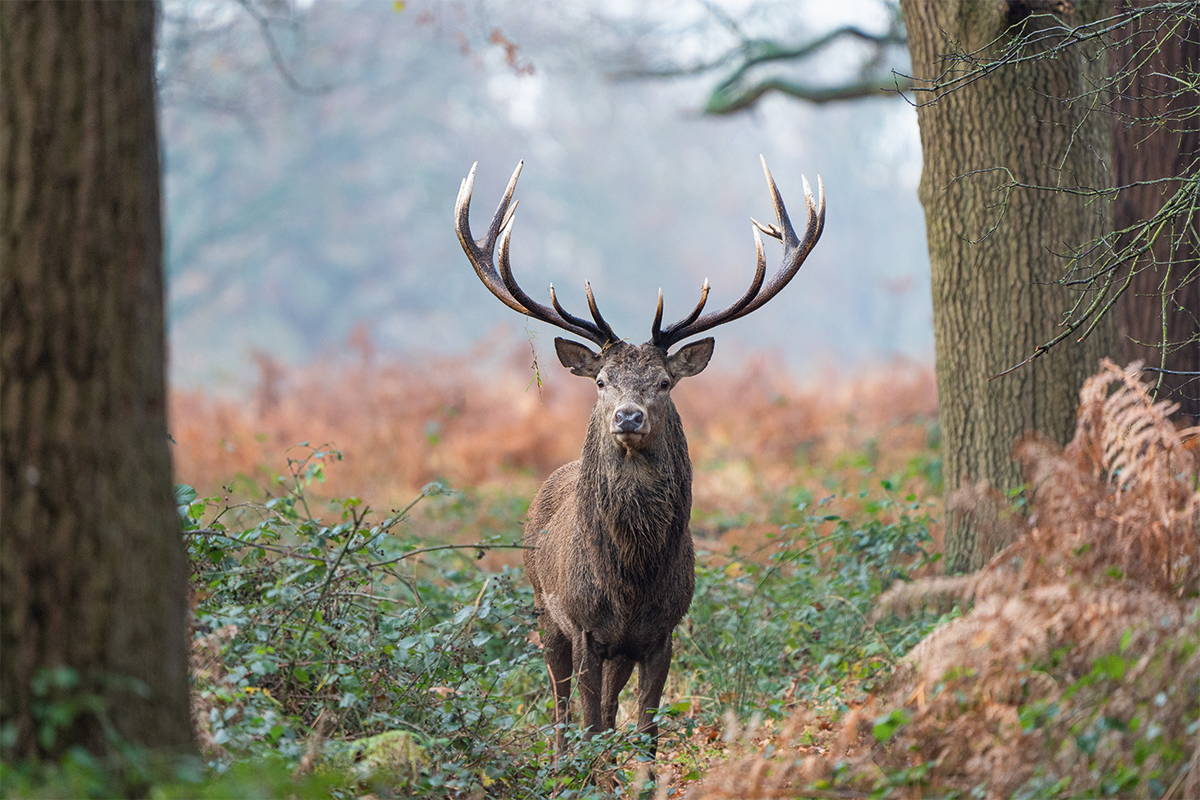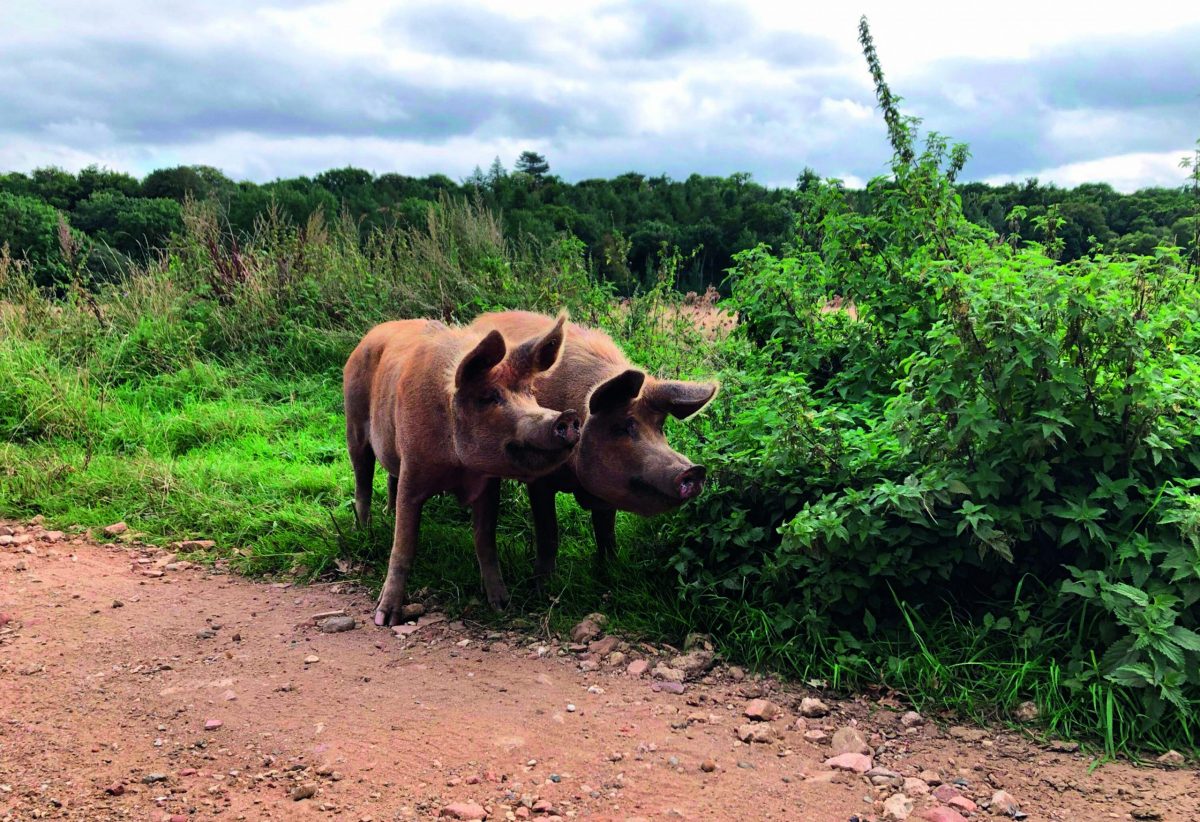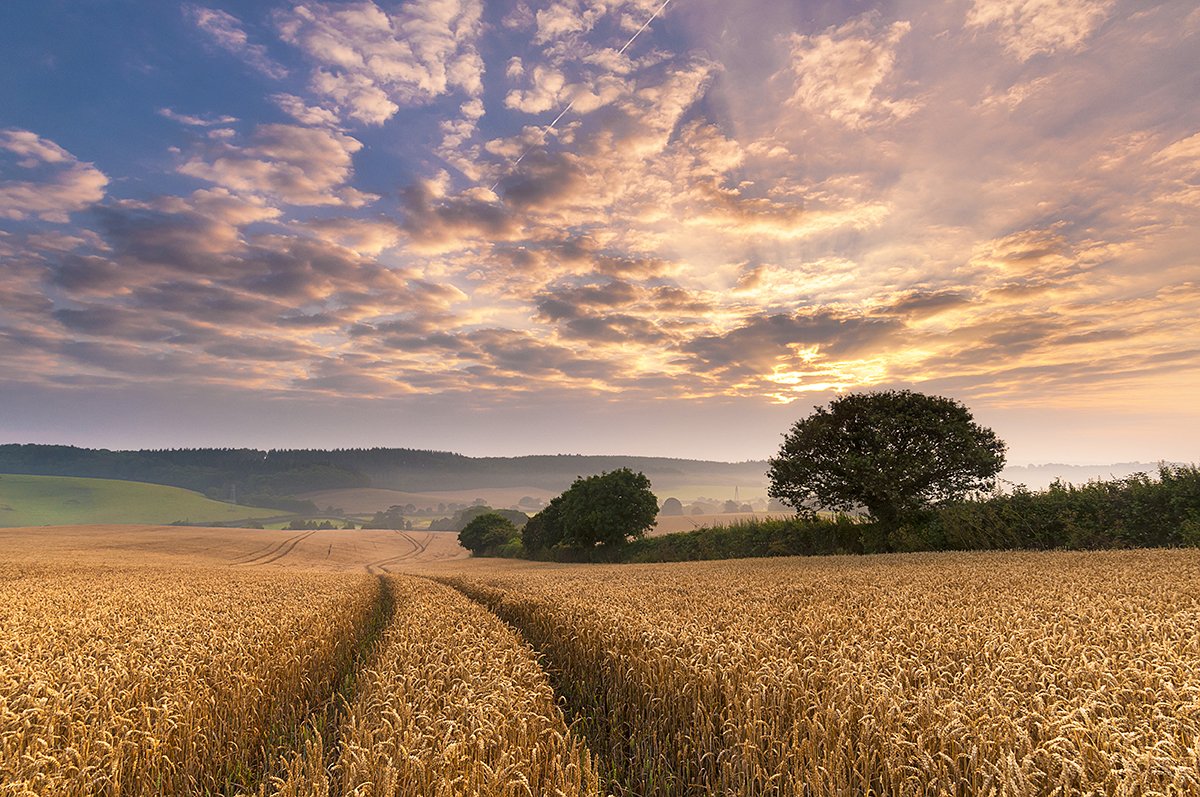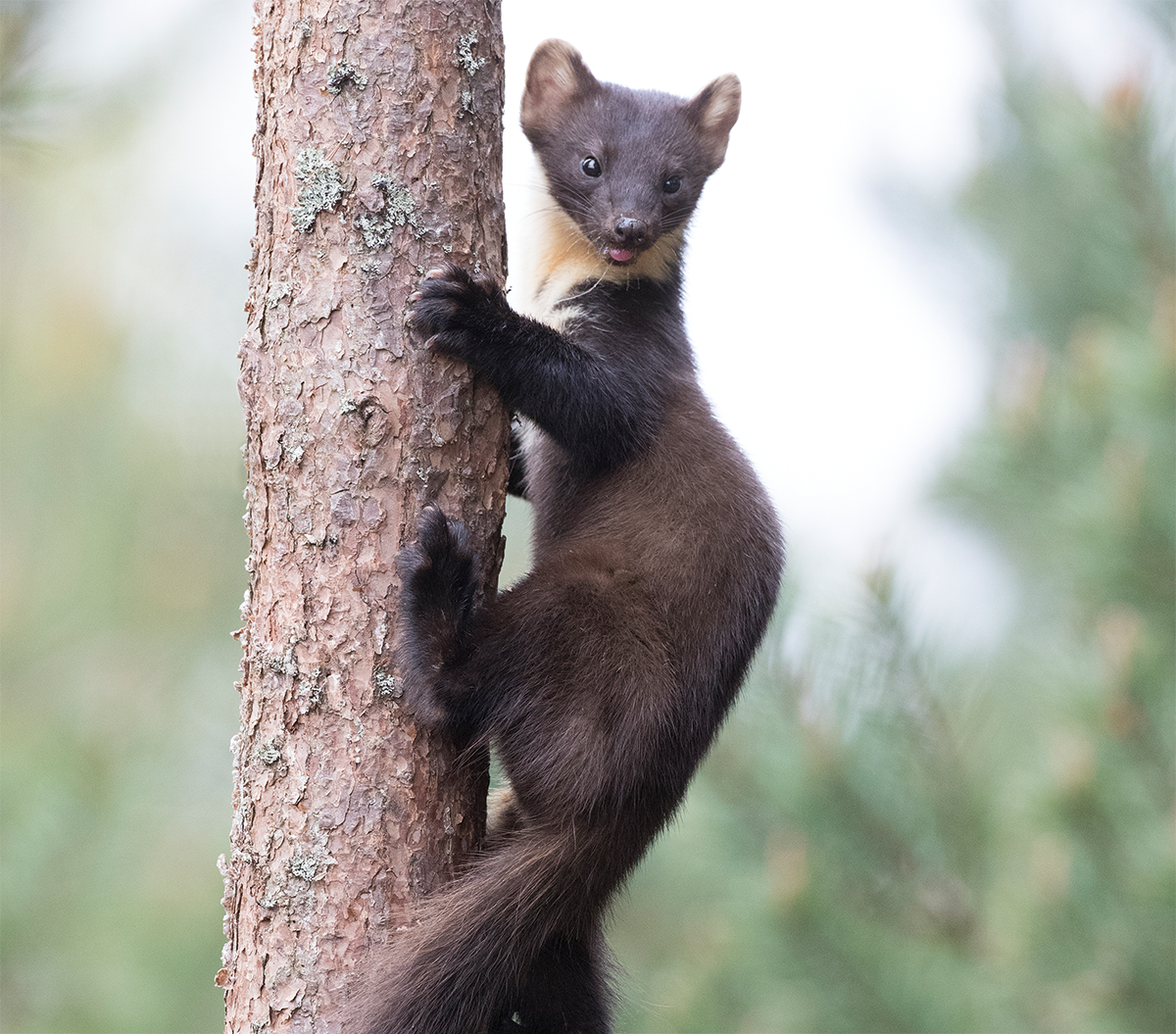Win CENS ProFlex DX5 earplugs worth £1,149 – enter here
What are the implications of rewilding?

Rewilding. The word leads to unending controversy and polarised views. Let’s explore why.
As a sportsman, what is there not to like? Cleaner rivers, more wildlife to pursue, more wild places to enjoy. However, the rewilding idea is perceived as part of an environmental, ‘Packhamite’ agenda, and one that your average country person is rather suspicious and dismissive of. I would argue there could be more good than bad, though. As with all land management, it is complex both in terms of the environment and the socio-economic results.
Farmers are tired of being led up one garden path after another. Everyone has an opinion as to what our land should be and do. We have had policies dragging the land in one direction, then another. Farmers and land managers have retreated to a simple principle: we use land to produce food. Not to produce food is a crime in the eyes of most of the farming community.
Food production is a religion and not producing makes you an apostate. Producing profit seems almost a secondary consideration. Most country dwellers are conservative with a small “c”. They tend to hang on to the status quo and be traditionalists. This has served us (them) well; fast fashion in clothing and other areas just isn’t us.
Future routes
Environmentalists see that the UK’s biodiversity has been declining for decades and know that some land needs to be available for wildlife. They want to arrest this decline and one obvious way is down the Knepp-style rewilding route (the estate near Horsham in West Sussex). Taking marginal land out of purely food production and allowing nature to take over.
With no apex predators, the large herbivores and omnivores necessary for rewilding still need to be managed (eaten), therefore rewilded land still produces food, just in a different way. For all I know it may be as productive, but with fewer inputs. An annual cull of deer, longhorns and Tamworth may compare and equate to similar yields of cattle grazed on pasture-based systems, but with fewer costs, less management, while commanding higher prices from a public emotionally engaged with this sort of system. Add in a bit of tourism, some biodiversity credits and selling timber, maybe this is the future.

Tamworth pigs roaming wild still need to be managed
I am a sportsman, farmer and environmentalist, and here are my views.
We definitely have less biodiversity, and we need to tackle this for the sake of our sport and environment. You can also say for the sake of food production as well; a healthy natural environment is key to long-term food production.
We need to produce food, especially now as a result of Russia’s invasion of Ukraine and the concomitant effect on food production because of the amount of wheat Ukraine produces. All my life I have been told we will be appreciated as farmers when we have a war. We have had several which have been irrelevant, but Putin parking his tanks in the Ukraine could not be more relevant for food self-sufficiency. We are in for a bumpy ride and home-produced cereals have suddenly become alarmingly relevant. Dig for victory maybe back. I have also been told all my life that you can take land out of production, but only a fool puts it in a state where you can’t bring it back if needed. Housing on prime farmland is crazy.
So Knepp-style rewilding, why not? Charlie Burrell owns an estate of marginal land, enjoys his wildlife and has found a way to make it a profitable enterprise. As he was breaking new ground, he required some funding from Natural England. His wife Isabella Tree’s book sells well and turns the chattering classes into experts (maybe not) and enthusiasts (which is good) over nature.
Knepp has many species you don’t see elsewhere and as a refuge this has to be a good thing. The book has made rewilding trendy, the thing to do. I believe in trying new things and this is a new thing with many virtues. I am glad I am not downwind as the weed seeds may be a little trying while the land transitions through boom-and-bust cycles for various pernicious weed species, but it will settle down in the end.
We humans can never be content to let nature just takeover. We know we can speed up this process by applying some management techniques, so pure rewilding is seldom truly stepping away completely. One of the techniques is to introduce large herbivores, preferably ones full of testosterone. They manage vegetation by eating and, due to the testosterone, thrashing with antlers, horns and so forth.
Obviously, the large herbivores can be managed by allowing us to eat the excess. (There is an argument for letting them die and rot to feed the natural processes, the flora and fauna involved in this natural process, but Defra has rules that stop you doing this.) So, we can still produce human food via a wild landscape or one that is in transition. It is likely to be less, but can still be a remarkable amount.

We need to produce food more than ever at the moment
Tax issues
A financial incentive for an estate to rewild is the tax system. When you own land, you have tax implications and you need an accountant. Tenanted land is subject to inheritance tax (IHT), land in-hand (managed by the owner) is not. If you have a large acreage but limited time to farm it, then rewilded, or massively extensive systems allow you to save 40% of your capital value when you die.
This obviously is one of those areas where social injustice is incentivised by a tax system. It could be equivalent to the Highland clearances. Large landowners with tenanted land could be encouraged by the new Environmental Land Management subsidies (ELMs) and IHT to remove tenants and return land to its pre-farmed state. I believe it is going to be tough to be a tenant in this brave new world of monetised natural capital and ELMs combined with tax avoidance.
There is also the carbon-credit driven land grab from investment companies that is likely to exclude the tenant farmer. Tenant farming is a way for new entrants to gain a foothold in the industry, so the loss of these opportunities may reduce the future churn of new entrants and ideas coming into farming.
One of the principles of rewilding is more large predators. This can be challenging as some eat livestock, domestic dogs, cats and, occasionally, people. Is this a good enough reason not to do it? Apparently not in many European countries, where bears, wolves and lynx have been introduced and their numbers are increasing. It does sound alarming, and the media makes considerably more fuss about the occasional person being eaten by a bear than the more conventional ways we exit this life.

There is indisputable logic behind reintroducing the indigenous pine marten
I am sure this sounds flippant, and it is. However, it is worth considering our attitude to these big predators rationally, rather than through the Brothers Grimm perspective. There is no TB in areas of Poland where there are wolves; the wolves eat the badgers and weakened deer, thereby clearing up the risk of transmission. When the big predators eat the middle predators, you tend to get more of the animals or plants as the wolf’s prey isn’t there to eat any more. The excessive numbers of deer in parts of England are devastating for biodiversity, especially woodland birds. If they were constantly being moved on by a lynx, they would cause less damage. There are far fewer road traffic collisions with deer where you have wolves as the wolves use the roads as arterial/linear hunting routes and keep the deer away from the roads.
I cannot see these larger predators arriving any day soon. However, pine martens and wildcats would seem likely and there is indisputable logic behind their introduction into new areas. They are both indigenous species, still wild in parts of the UK. They eat grey squirrels, probably the most damaging, invasive animal we have. Squirrels are nest robbers, so not only incredibly damaging to trees but also to our woodland birds and, in my opinion, dormice.
The wild cat and pine marten would kill other smaller predators and omnivores as well as control stoat, weasel and the destructive rats that build up around the pheasant pens. We don’t know if the benefits outweigh the downsides. Hand-reared pheasant eaten by predators is an obvious downside. It is more difficult to measure the benefits of these medium-sized predators killing the smaller, more numerous predators.
Outcomes
Consequences, both beneficial and harmful, aren’t always apparent. The view on the consequences also depends on the individual’s standpoint. In areas where badger numbers have been reduced, hedgehog numbers have bounced back. Good if you like hedgehogs, but will the hedgehogs eat more ground-nesting birds’ eggs? White-tailed eagles are killing the smaller birds of prey and could well severely impact on their numbers. They are known to eat buzzards and I know of falconer’s peregrines killed by them. The hen harrier seems remarkably vulnerable.
The world constantly changes. Some aspects we will enjoy, some will be inconvenient and challenging. We do need to address the decline in our biodiversity, and rewilding is a tool that can be brought to bear. I believe regenerative farming is another change of practice that could produce food and dramatically improve biodiversity on some landscapes; it will be more effective than extreme rewilding. There is a spectrum from completely letting go, through lighter-touch farming to high-input farming.
Roger Upton, the most famous falconer of his generation told me: “The greatest threat to the wild sports we enjoy will be environmental degradation, loss of habitat.”
Healthy habitat will always produce harvestable quantities of prey species. It is environmental degradation that is destroying salmon numbers. Addressing this will restore those numbers. The same for wildfowl, grouse, grey partridge, and the flora and fauna we enjoy seeing and interacting with when pursuing our pastimes. Wild sports require wildlife. Wildlife requires wild places.
Related Articles
Get the latest news delivered direct to your door
Subscribe to Shooting Times & Country
Discover the ultimate companion for field sports enthusiasts with Shooting Times & Country Magazine, the UK’s leading weekly publication that has been at the forefront of shooting culture since 1882. Subscribers gain access to expert tips, comprehensive gear reviews, seasonal advice and a vibrant community of like-minded shooters.
Save on shop price when you subscribe with weekly issues featuring in-depth articles on gundog training, exclusive member offers and access to the digital back issue library. A Shooting Times & Country subscription is more than a magazine, don’t just read about the countryside; immerse yourself in its most authoritative and engaging publication.







